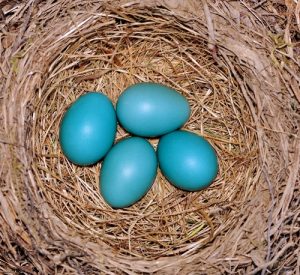Egg Education
Do you ever wonder about what an egg is made up of? How it all creates a chick, or even what each part is actually for? Recently I did some in depth research to find the answers to these questions. I was astonished by the complexity of the egg that is so easily overlooked.
When talking about the shell of an egg you might say its hard, protective, solid, but actually an average chicken egg has about 7,000 pores on its surface. These are so the chick can breathe on the inside on the egg. This is also how moisture and other essential vapors/gases (including oxygen) come in and out of the egg. This shell is made up of calcium. The Cuticula is inside the egg shell and keeps out bacteria and dust that would otherwise contaminate the inner egg.
Underneath this shell are two membranes, the outer and inner shell membranes (this is what makes it slightly difficult to peel eggs at times). These membranes protect the eggs from bacteria & prevent necessary moisture from expelling from the egg.
When the egg is first laid it is very warm. About 106 degrees Fahrenheit to be exact. Once it leaves the hen and cool to room temperature the egg shrinks inside the shell creating a vacuum effect that pulls air into the egg. This is similar to a bottle of water left in your car on a hot day then taking it into the cold house and the bottle shrinks like someone squeezed it. Due to this the air cell is formed in the egg on the large side of the egg.
As the embryo grows the shells inner membrane surrounds & contains the Thick and Thin Albumen of the egg. This membrane helps protect against bacteria. The Albumen provides the liquid in which the embryo develops, and it also contains a large amount of protein for the necessary development of the chick.
The Vitelline membrane is very thin until after fertilization. Then the membrane thickens to protect the Yolk and Germinal disc.
In a fresh egg you can see the Chalaza (2 cords), which are made from twisted strands of fibers & protein. This is also what holds the yolk in the center of the egg. The more noticeable the Chalaza is, the fresher the egg is.
Many people mistaken the yolk for the baby chick but actually the yolk is a form of protein for the chick as it develops. The yolk also contains all the fat in the egg. The Germinal disc is where the hen’s genetic material is found and where the chick develops.
Jeremy Smith



 There are many people that think all brown eggs are free-range eggs, but actually the color of the eggs has nothing to do with the diet of the chickens and almost everything to do with the breed of the chicken. I found this interesting but often the egg colors are linked with the color of the chicken’s earlobes. Red earlobes generally mean they have white eggs. White earlobes have brown eggs. This does not hold true to all breeds but it does apply to the majority. Some chickens are even thought to have Easter colored eggs. The Araucanas & Ameraucanas lay blue eggs.
There are many people that think all brown eggs are free-range eggs, but actually the color of the eggs has nothing to do with the diet of the chickens and almost everything to do with the breed of the chicken. I found this interesting but often the egg colors are linked with the color of the chicken’s earlobes. Red earlobes generally mean they have white eggs. White earlobes have brown eggs. This does not hold true to all breeds but it does apply to the majority. Some chickens are even thought to have Easter colored eggs. The Araucanas & Ameraucanas lay blue eggs.
